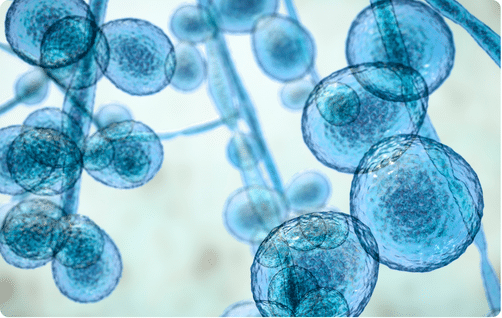Under the Microscope – Candida auris in Focus
Candida auris (C. auris) is a rapidly emerging pathogenic yeast. Individuals who have recently stayed in nursing homes and have lines and tubes that go into their body (such as breathing tubes, feeding tubes and central venous catheters) seem to be at the highest risk for C. auris infection.
C. auris has caused prolonged outbreaks on five continents: India, Pakistan, Venezuela, Colombia, Spain, Israel, South Africa and the USA.

What do I cause?
If C. auris enters the bloodstream and spreads throughout the body, it can cause invasive candidiasis (an infection caused by the yeast Candida spp.). C. auris has caused bloodstream infections (Candidemia), wound infections, and ear infections.
Why am I a microbial threat?
C. auris infections have been reported from over 30 countries and are often multidrug-resistant and resistant to multiple antifungals commonly used to treat yeast infections. Only a few antifungal types exist, so resistance can severely limit treatment options. Some strains are resistant to all available classes of antifungals.
Did you know? The prevalence of C. auris infection is unknown and likely underreported due to misidentifying C. auris as other yeasts or bacteria, making detecting and controlling this pathogen difficult.
Where can I be found?
C. auris has a particular preference for skin, particularly the armpit and groin. C. auris has the potential to colonise hosts within days to weeks of exposure. Colonisation with C. auris may persist for many months and possibly indefinitely, and invasive infections may occur within days to months after the colonisation. Studies have found that C. auris may be found in patients’ rooms and outside the patient’s rooms in hallways, chairs, beds, windowsills, counters, electrocardiogram leads, blood pressure cuffs, infusion pumps, and ventilators.
Did you know? C. auris was first isolated from the external ear canal of a patient in Japan in 2009.
How am I transmitted?
C. auris has caused outbreaks in healthcare settings. It can spread through contact with contaminated environmental surfaces or equipment or from person to person. It is essential to identify asymptomatic colonised patients to take additional precautions when placing indwelling devices or surgical intervention. These patients may also be a source of transmission to other patients and environmental contamination.
Did you know? C. auris can survive on moist and dry surfaces for at least 14 days.
How can you defend against me?
Disinfectants with Yeasticidal activity are essential for infection control and defence against C. auris. The best practice is to use a high-level disinfectant that incorporates robust, broad-spectrum biocidal chemistry that can be expected to destroy bacterial spores, fungal spores, all common vegetive bacteria, mycobacteria, yeast, and viruses.
Did you know? High-level disinfectants will prevent the spread of harmful pathogens from one patient to another while safeguarding healthcare professionals during routine procedures.
We are here to help.



